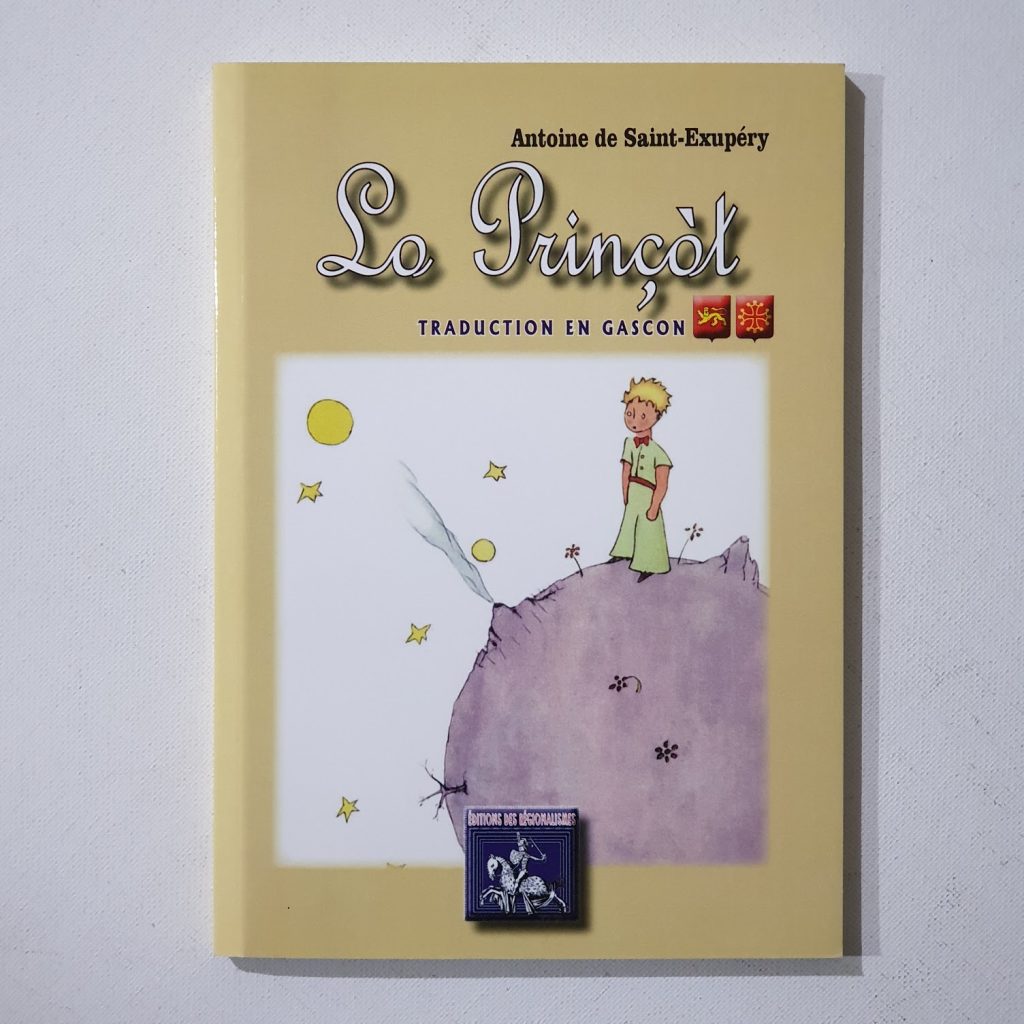
Lo Prinçòt — in Gascon language.
Gascon is a rich and historically vibrant variety of the Occitan language, spoken primarily in southwestern France, particularly in Gascony and parts of the French Pyrenees. As one of the most distinctive branches of Occitan, Gascon developed under unique conditions shaped by geography, contact with Basque-speaking populations, and early political autonomy. Though often referred to as a dialect, many linguists argue that Gascon’s deep structural differences—including a Basque-influenced phonology, its distinctive treatment of Latin initial ‘f’ (which often became ‘h’, as in festa > hèsta), and unique verbal constructions—mark it as a language in its own right within the broader Occitan continuum.
Historically, Gascon was the everyday language of medieval troubadours, peasantry, and regional courts in a time when Occitan was a literary and administrative lingua franca of southern France. It flourished from the 12th to the 14th centuries, particularly in poetry and oral tradition. Though the centralising policies of the French crown and later the Republic steadily replaced it with standard French in administration, education, and prestige, Gascon remained rooted in rural life—preserved by shepherds in the Pyrenees, vintners of Armagnac, and storytellers across the plains. Some of its most fascinating survivals include its use in traditional béarnais culture (notably in Béarn), where the dialect maintains strong emotional and symbolic significance even when less used in daily life.
Culturally, Gascon-speaking societies have nurtured a deep attachment to their language through oral poetry, proverbs, traditional dance (like rondeaus and branles), and a local identity defined by warmth, independence, and often a quiet wit. The language has long served as a mirror of regional pride and resistance—used to express local worldviews, spiritual reflections, and everyday experiences far removed from the standardised French of officialdom. Even the famed musketeer d’Artagnan, fictionalised by Dumas, hails from Gascony, and his fiery temperament is often seen as embodying the Gascon character: proud, bold, and quick-tongued.
Within the Occitan family, Gascon stands apart yet firmly connected. It shares a literary tradition, general grammatical structure, and vocabulary with Languedocien, Provençal, and Limousin, but remains unique enough to be mutually unintelligible in many cases. Modern efforts to revitalise the language—particularly in the form of Béarnais Gascon, the best-known variety—have included regional language education, festivals, and music that seek to reintegrate it into the lives of younger generations.


